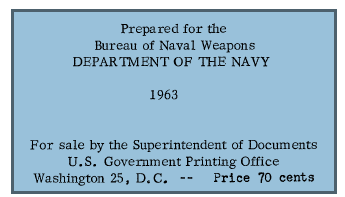Koodsg...
There are 5- general-types of structural shim materials [with variations due to metal alloy]. Each is intended to rigidize the joint by eliminating gapping between members which then ensures some-what-predictable fastener load transfer/sharing between parts. In general, a gap that can be closed [0.002—0.005 remaining is usually OK] between parts with ‘finger-pressure’ will fasten-together “OK”: However a gap that CANNOT be closed between parts with ‘finger-pressure’ should be shimmed to prevent permanent gaps being built into the structure.
1. Solid metal, custom made. These are blocks, wedges, etc, machined from solid metal to fill an obvious/predicted structural gap due the natural fit of parts. These are usually designed before-hand and are manufactured from specified metals to a specified shape with a corrosion protective finish applied [IF/as required]. These usually developed by a designer and have a drawing-specified Part Number.
2. Solid sheet metal, standard sheet metal gages. These are normally made on-the spot to fill relatively uniform gaps between parts [usually expected], which may occur with wide gap variation for min-to max. These are generally trimmed to fit a gap-profile and may have slight taper. They usually have a corrosion protective finish applied after trimming/tapering/drilling has been accomplished.
3. Peel-ply-laminated metal shim. Foil or thicker individual sheets are bonded together. The planform may be trimmed to fit a joint shape; while laminates are individually trimmed to fill an odd off-size gap with ‘solid metal’. A sharp knife will generally score one laminate at a time so that each can be broken off until a it conforms with a gap shape. Once trimmed, drilled (or reamed)-to-fit, they are usually brush-primed for increased metals isolation [and to seal the trimmed bonded-laminate stack from moisture intrusion]. Typical: MIL-DTL-22499/*
4. NOTES.
4.1 Solid metal shims can be made from virtually any metal alloy.
4.2 Structural peel-ply laminated shims are generally made from aluminum, CRES or titanium foil or sheet alloys. Mechanical peel-ply shims are often made from steel and brass foil or sheet.
4.3 Current good practice demands that these metal shims be installed/fastened ‘wet’ with sealant or primer to seal moisture/fluid-drain pathways.
5. Prepreg fiberglass-epoxy shim, cured on installation. The soft multi-ply material is trimmed to fit a joint planform; and then is caught/crushed between the members causing localized thickening and thinning of the malleable material. This material is then hard-cured while on installation.
6. Liquid shim made from epoxy paste adhesives filled with powdered metals for improved crush resistance. The liquid shim materials is mixed to catalyze, then buttered onto the mating parts, which are pulled together tightly with temporary fasteners. As soon as the parts are settled together as-tightly-as-possible, then the excess liquid shim [squeeze-out] is generally wiped-away.
7. NOTES.
7.1 Typical non-metallic shim and liquid shim specs, see AMS3726/*
7.2 General good practice dictates that these non-metal shims be over-coated with epoxy primer or/and sealant to 100% seal them from contact with any moisture or random petroleum/synthetic fluids.
7.3 Non-metal shim materials are rarely ever used if exposed-to, or may-be exposed-to, fuel, moisture/water/hydraulic oil, etc.
7.4 CAUTION. Glass fibers absorb moisture and fluids along the fibers, often leading to corrosion or delaminations/disbonds. Other type fibers may also have this nasty characteristic.
7.5 Graphite [carbon, etc] fibers are highly dissimilar to aluminum, steel, etc which can generate rampant corrosion in the presence of moisture/oxygen/metals. They also have substantially lower thermal expansion/contraction rates than most metals… and are substantially stiffer than most metals: hence may become disbonded from the metals due to thermal cycling [many problems]; or worse-case, may adhere tightly to the metals and ‘pick-up-unintended loading from the metals’ due to stiffness mismatch.
7.5 My favorite liquid shim materials are made by Devcon... aluminum putty, titanium putty, stainless steel putty, etc: very useful stuff [made me a hero a few times].
8. CAUTION. Shims appear to be minor structural elements. DO NOT BE FOOLED: they can be very critical. Suggest taking a little engineering-time to study/understand how they function; the affects of the various materials and finishes; and long-term implications for structural durability.
8.1 Airframe structural Design, Michael CY Niu
Analysis and Design of Flight Vehicle Structures, EF Bruhn [I think]
Regards, Wil Taylor
o Trust - But Verify!
o We believe to be true what we prefer to be true.
o For those who believe, no proof is required; for those who cannot believe, no proof is possible.
o Unfortunately, in science what You 'believe' is irrelevant. ["Orion"]
o Learn the rules like a pro, so you can break them like an artist. [Picasso]

